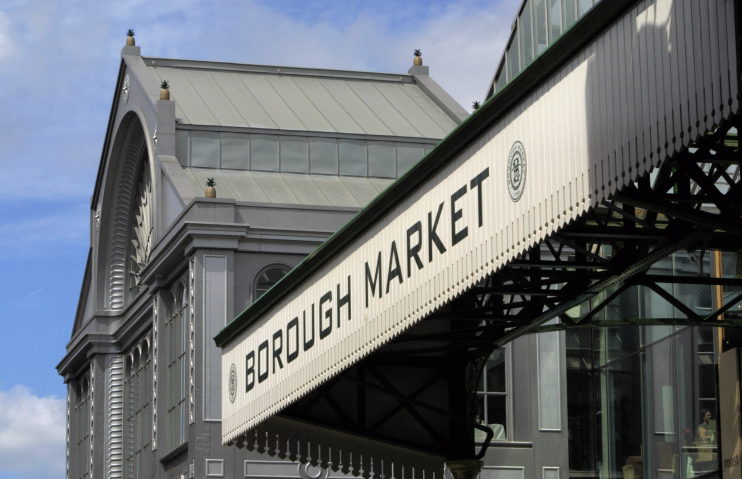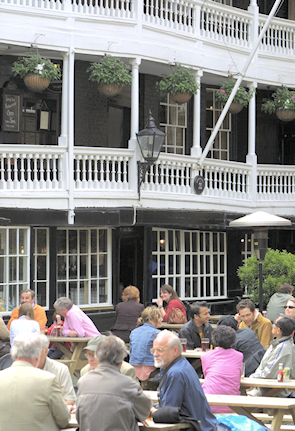Borough
Borough, Southwark
Southwark’s historic commercial centre, noted especially for its inns

The Borough’s name recalls the presence of a defensive ‘burgh’ (a fortified settlement) protecting London Bridge. The church of St George the Martyr was built in the 12th century and Marshalsea gaol was in existence by 1381, when it was attacked during the Peasants’ Revolt.
The most illustrious of the Borough’s many inns was the Tabard, from which the pilgrims of The Canterbury Tales began their journey. Pilgrimage Street, Manciple Street and Pardoner Street all commemorate Chaucer’s tale tellers. The White Hart Inn was the headquarters of Jack Cade during his revolt of 1450 against Henry VI.
A 17th-century print shows a Civil War fort on Borough High Street guarding the southern approaches to London from Royalist attack but most of the Borough was burned down in 1676, in the so-called Little Fire of London.
The Tabard was rebuilt as the Talbot after the fire – the change of name apparently being the result of a misunderstanding by the signwriter.

The timbered and galleried George Inn was also rebuilt and – though there are still plenty of other pubs around here – this is the only survivor from the days when the inns thrived on their position serving the stagecoach route from London to the south coast, and when St Margaret’s Hill, now part of Borough High Street, formed a wealthy enclave amidst the surrounding poverty of Southwark. The George is a National Trust property, leased to Greene King.
St George’s church was stoutly rebuilt in the mid-1730s. The Talbot was pulled down in 1875 despite protests and Marshalsea gaol met the same fate, to less dismay, in 1887. Borough station opened three years later.
Borough market is of medieval origin and has traded at its present location for 260 years. The buildings date from the mid-19th century – including the Floral Hall portico (visible in the photograph at the top of the page), though this originally stood in Covent Garden, but was dismantled when the Royal Opera House site was redeveloped in 1999 and relocated here five years later.
In response to declining business at the end of the 20th century, the wholesale market expanded (very successfully) into retail, with accompanying pubs and restaurants, focusing on the ‘foodie’ consumer, with an emphasis on organic and speciality farmers’ produce.
Borough market was the scene of an Islamist terror attack on 3 June 2017. The three asinine assailants were all shot dead by police.
Charles Dickens’ father was imprisoned in the Marshalsea and the author made it the birthplace of Little Dorrit.
Borough market pops up in several British films, including Lock, Stock and Two Smoking Barrels, Wilde and Bridget Jones’s Diary.
Postal district: SE1
Station: Northern line (zone 1)
Further reading: Pete Brown, Shakespeare’s Local: A History of Britain through One Pub [the pub being The George Inn], Macmillan, 2012
and Ptolemy Dean et al, The Borough Market Book: From Roots to Renaissance, Civic Books, 2004
